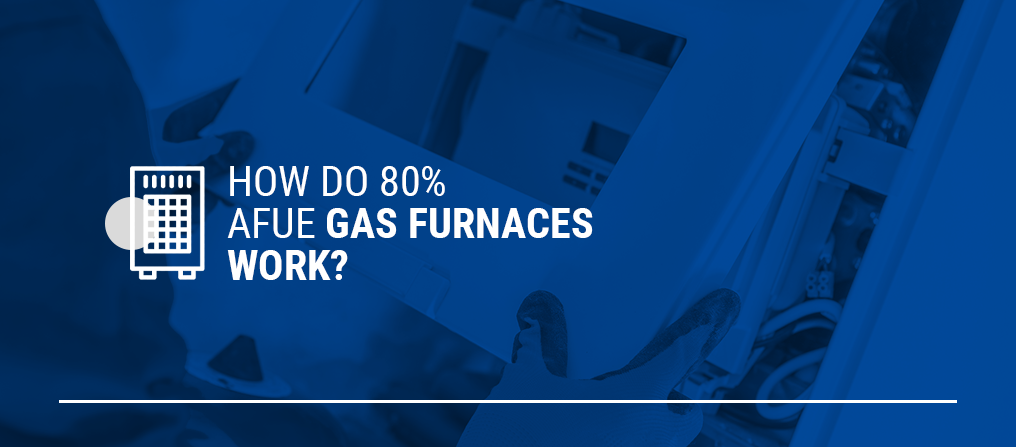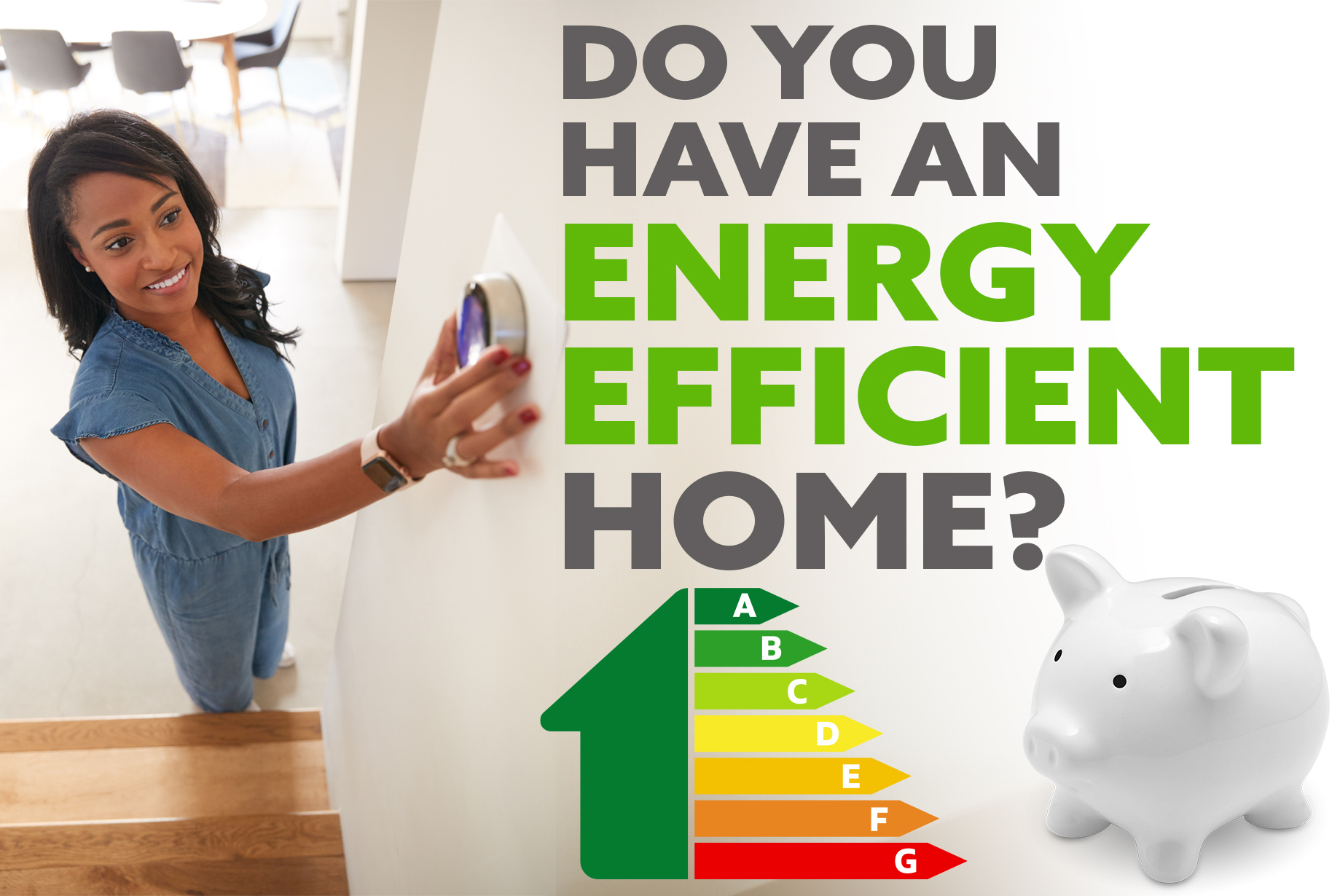
How Do 80% AFUE Gas Furnaces Work?
If you’re in the market for a new furnace for your home, you have probably seen the term “80% AFUE” among the many furnace choices available. What does this term mean? It is a way of designating high efficiency gas furnaces, so the consumer knows they are getting a more efficient unit for their home.
An 80% AFUE gas furnace is a very efficient choice for any home. It can also help decrease the overall furnace cost, including long-term fuel and operation costs. Let’s take a closer look at the definition of an 80% AFUE furnace and everything you should know about these types of furnaces.
What Does 80% AFUE Mean?
Gas furnaces, as well as oil- and electric-powered furnaces, are given an efficiency rating known as AFUE, or the Average Fuel Utilization Efficiency. The AFUE rating is a standardized method of measuring a furnace’s efficiency, and is given in the form of a percentage. The AFUE rating for your furnace tells you how much of the heating fuel goes into heating your home. If you subtract the AFUE percentage from 100, the remaining number is the amount of fuel that is wasted in the heating process.
New home furnaces typically have AFUE ratings somewhere between 80% and 100%. If a gas furnace has an AFUE rating of 80%, it means that 80% of your heating fuel goes directly toward heating your home, while the other 20% is lost, generally out the flue or chimney. The higher the AFUE rating, the better the efficiency of the furnace, so this rating is a good thing to keep in mind when deciding on a new furnace.
How Is Efficiency Measured?
As discussed, the AFUE rating is the standard measurement of efficiency for furnaces. For air conditioners, a similar rating system is used and is called the Seasonal Energy Efficiency Ratio, or SEER. Both of these energy efficiency standards measure HVAC systems, giving clear rating numbers to make it easy to compare models when shopping around.
So what makes a good efficiency rating for furnaces? The answer can depend on your home and average heating use, but in general, higher efficiency furnaces will rate at 80% to 85% and above. A new furnace must have a minimum rating of 90% to earn an Energy Star designation. Furnaces with quality, high-efficiency components can easily reach an AFUE rating of 90% to 95% and above.
Components of High Efficiency Gas Furnaces
What are the most important components of a high efficiency gas furnace? Here are the main parts you should know about:
- Ignition: Older furnaces often used a gas-powered pilot light for ignition, but many of today’s gas furnaces use an electric ignition system. The electric ignition is usually a more energy efficient option because it only turns on when the furnace is needed, instead of a pilot light that’s always burning.
- Two-stage heating: This newer style of heating is more efficient, especially in climates with widely variable temperatures outside. The lower stage uses less power and is used during more mild outdoor temperatures. When the temperatures outside dip lower, the second stage of the heater kicks in to jumpstart the heating process with more power. The second stage is somewhat less efficient on its own, but is generally only used as needed for cold weather.
- Variable speed blower: Just as with a two-stage heater, high efficiency furnaces also make use of variable speed blowers. This means that the blower will operate at a higher speed when more heat is needed, and then automatically switch to a lower speed to save on energy usage when it’s not needed.
- A second furnace heat exchanger: Most furnaces with a high AFUE rating — that is, 90% and above — utilize a second heat exchanger. This heat exchanger is able to extract more heat out of the exhaust that would otherwise be wasted and greatly increases overall efficiency.
- Sealed combustion: This type of furnace draws in air from outside the home, which increases energy efficiency and safety levels. Other furnaces use air from inside the home. Often, cold outside air leaks into the home in this unsealed combustion system, decreasing overall efficiency.
How High Efficiency Furnaces Work
In order to understand how a high efficiency furnace works, it’s important to first answer the more basic question, how does a furnace work? Let’s take a look at the basics of a conventional furnace:
- First, the thermostat registers the air temperature of the home. If the actual room temperature is lower than the set temperature, it sends a signal to the furnace to turn on.
- Next, the furnace opens a valve which delivers a stream of natural gas into the burners.
- The pilot lights or electric ignition then light the burners that will warm the combustion chamber and heat exchanger.
- Next, the heated air is pushed along by a blower up through the furnace and into the ductwork of the home. The heated air flows into all the rooms of the house through the air vents.
- Lastly, the leftover combustion gases are safely released through a flue or chimney.
Beyond these basics of conventional furnace operation, how does a high efficiency furnace work? Energy efficient furnaces have a few key differences from conventional furnaces. Most importantly, energy efficient furnaces utilize two heat exchangers, which are used to extract even more heat from the exhaust and increase overall efficiency. They also use a sealed combustion system with a specialized air intake pipe to ensure the cold outside air does not leak into the home and decrease the overall efficiency of the system. A sealed combustion system is also much safer, as it greatly reduces the chances of a backdraft of air pulling exhaust gases back into the home.
In a high efficiency furnace, cool air enters the furnace through a filter, and the air travels through the combustion chamber. The burner in the combustion chamber will use one of two speeds, as determined by the thermostat and temperature conditions. Instead of a pilot light burner, high efficiency furnaces use electronic ignition, and may have additional electronic controls.
The blower motor in a high efficiency furnace usually operates as a two-stage blower, and will automatically use the correct speed needed to heat the home and maintain efficiency. Another difference from conventional furnaces is that the blower compartment in a high efficiency model is often insulated to prevent heat loss in this stage.
The air then travels to the primary heat exchanger, just as in a conventional furnace. The combustion gases then go into the second heat exchanger, where the gases condense into liquid carbonic acid as the heat is absorbed out and utilized by the furnace to produce more heat for the home. The condensate usually drains out through a floor drain, and any leftover gases are vented out of the home through a plastic flue pipe. This differs from the metal pipes required for the much hotter flue gases vented from a conventional furnace.
Contact Us to Learn More
If you have questions about 80% AFUE gas furnaces, the team at MRCOOL is happy to assist you. Our trained and knowledgeable staff are experts in the field and can answer your questions and help you find the best furnace for your home. Contact MRCOOL today to learn more about our high efficiency furnace options.










Thermostat recommended for a 80% recently bought heating furnace
Unfortunately, we do not have a thermostat for a gas furnace. Most third-party thermostats should work, but you will want to make sure before you purchase that your thermostat is compatible with your furnace.